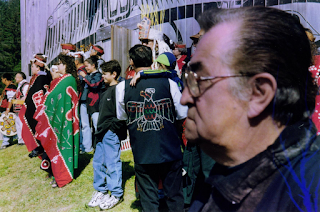“We have put through 500 students in the past ten years, graduating from a seven-month program that is approved by the Department of Advanced Education in the Province of Manitoba,” operating under the Private Vocational Institution's Act, says Payne. “Courses are taught by former law enforcement officers in classes running five hours per day, three intakes per year, including April, September, and October.”
All three intakes per year contain the same curriculum. April and September intakes are morning classes from 8 a.m. to 1 p.m., and the October intake runs classes from 1 p.m. to 6 p.m.. Students come from across Canada from Newfoundland to Vancouver. The majority are from Manitoba.
Stephen’s academy went to police agencies with inquires about putting together a curriculum based on the growing demand for trained candidate-recruits. “This seven-month post-secondary program carries no guarantees of hiring for law enforcement duty, however, recruitment and hiring occurs in municipal police services, RCMP, Corrections Canada, and Border Services, and Sheriffs offices across the country.”
The NWLEA works a lot in First Nation and Aboriginal recruitment, “We usually average two Aboriginal students per class, at least six graduating per year. Students across the board come from both genders, although 80 percent are male and 20 percent are female.” Payne says the average age of recruits has been increasing in the past two years. “It was average age 19 up until two years ago. Now we are seeing 24 to 30 year old recruits.”
The staff complement at NWLEA is made up of teacher/instructors who have retired from police agencies in Winnipeg, or England, or the RCMP, Corrections Canada, or Border Services. The student who is accepted into the program pays a fee of $7815.00, all-inclusive, with registration uniform, text books, and tuition.
Payne says, “We take individuals up to a week before each course. They must have grade 12, good physical health, no criminal record, and go through our screening process, including four essays that are written during the process, and an in-depth interview.” They are screened with two references, a medical examination, and a criminal record check.
Payne notes, “First Nations are often Band-funded into the Law Protections and Safety Diploma training program. They may proceed to recruitment in Aboriginal policing units or may be trained for employment in outside agencies, security services, government agencies, and individual Bands. Other employment is found in Manitoba government agencies. Most of our Aboriginal candidates are from Ontario and Manitoba. We also customize courses that meet specific requirements.” A current website takes applications electronically, and international students have come to the academy in the past, “but visas are a difficulty.”
Eight shareholders own the academy that is run by a board of directors, “Things are looking well, we have had success thus far. Our September class is expected to be full. We are effective but our teachers make it clear that this is not a replacement for recruit training.” Even so, the curriculum is detailed and hands on in role-playing. Self-defense and martial arts techniques are also taught in the program.
The academy teaches through three basic curriculum streams, including: 1. Law, Protection and Safety Diploma Program; 2. The Certificate Programs were created for those individuals seeking a career in Law Enforcement who: are not planning to complete a diploma program; do not plan to complete a diploma program immediately; want training is specific areas of law enforcement; 3. Aboriginal Police Training; 4. Professional training for government agencies, and private companies also available on-demand.
Payne says, “First Nations and Metis communities bear the brunt of Canada's rising crime rate and it is apparent to community leaders that provincial and federal governments cannot provide them with the protection and security they need and deserve.” Payne says, "As Aboriginal communities move closer and closer to true self-government, providing protection and safety to community members will become a top priority. Without security of the people within a community, there can be no effective government."
This program is designed, he says, "to help meet the needs of the Aboriginal community. Northwest Law Enforcement Academy has developed Band Constable Training - Level One, Level Two, Level Three, plus Community Police Training, and Police Commission Training.”






